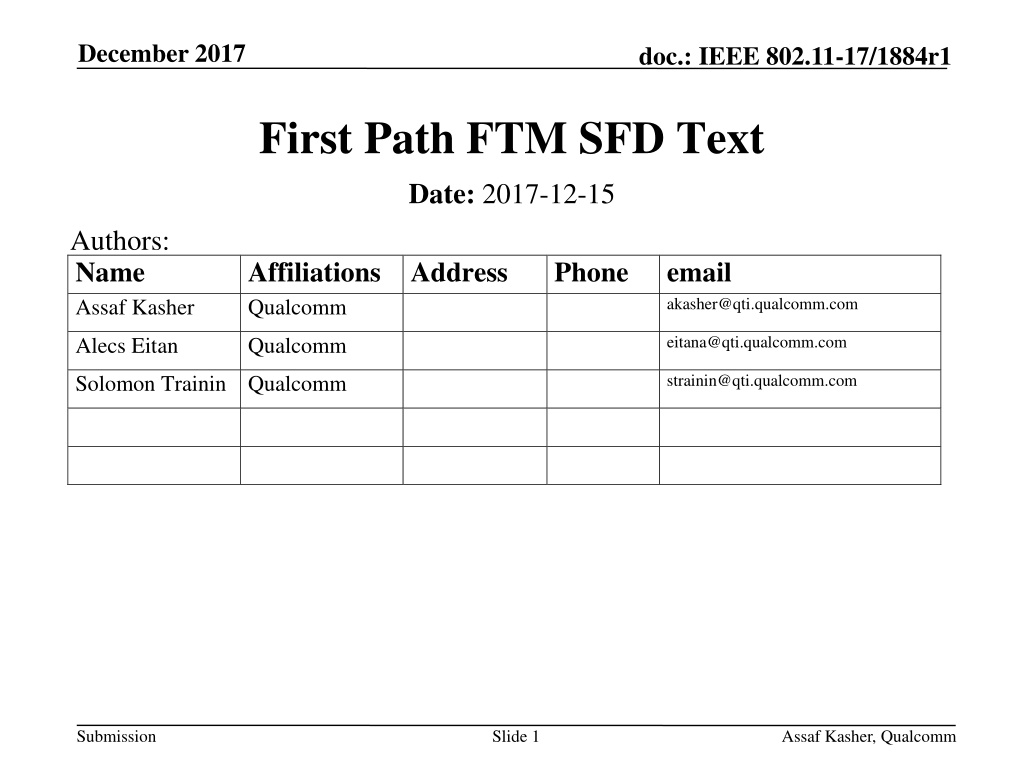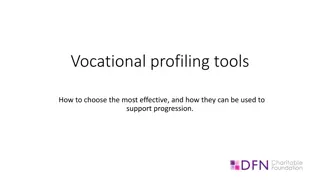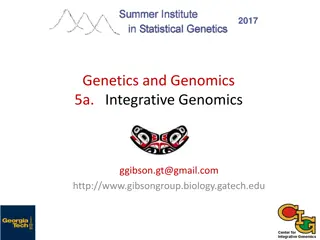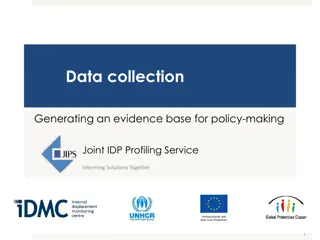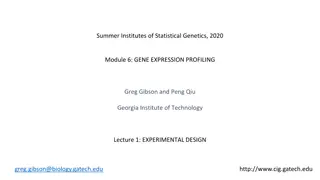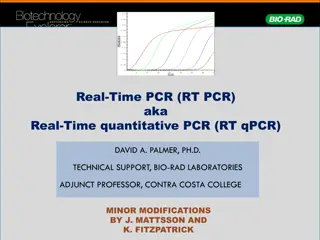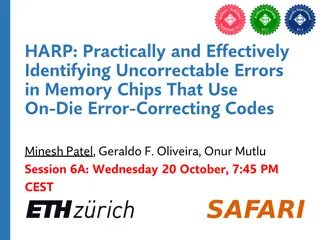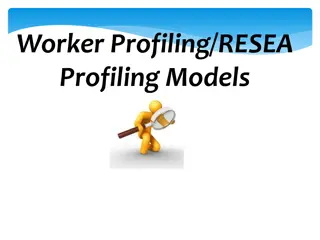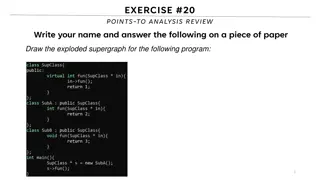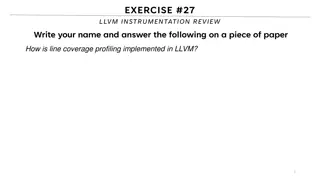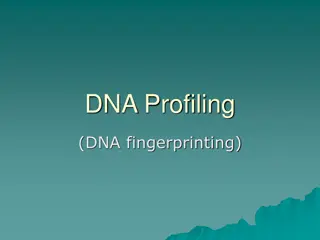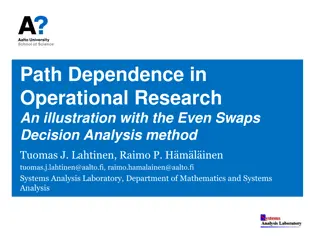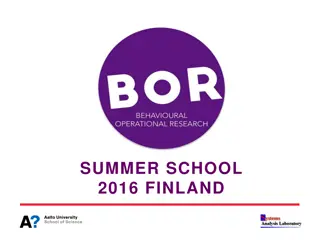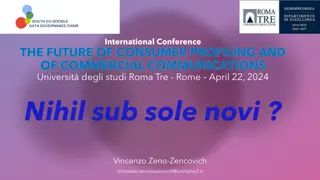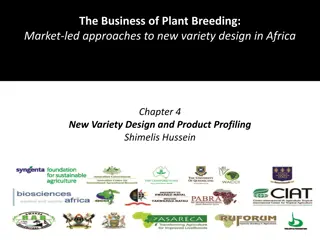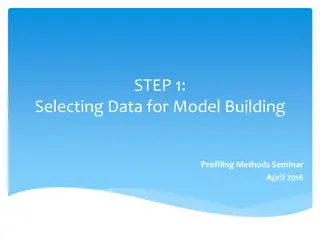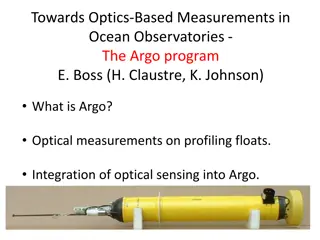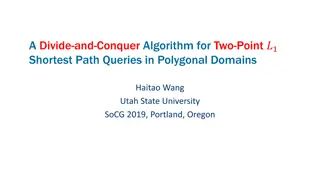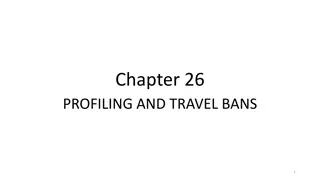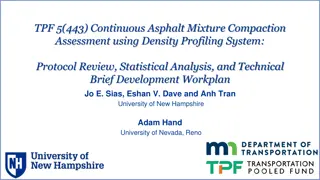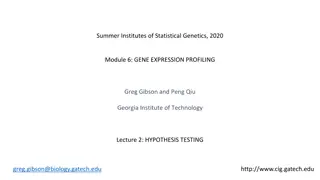Interprocedural Path Profiling and Techniques
Path profiling is a technique that counts the number of times specific path fragments are executed within a program. Our work focuses on extending the Ball-Larus methodology with new interprocedural and intraprocedural techniques, enabling advanced program optimizations and software maintenance through path-qualified data flow analysis and path spectra. The Ball-Larus approach involves removing cycles, adding surrogate edges, and labeling vertices and edges to assign unique path numbers for instrumentation. Explore the various applications and methodologies in this field to enhance program performance and debugging capabilities.
Download Presentation

Please find below an Image/Link to download the presentation.
The content on the website is provided AS IS for your information and personal use only. It may not be sold, licensed, or shared on other websites without obtaining consent from the author.If you encounter any issues during the download, it is possible that the publisher has removed the file from their server.
You are allowed to download the files provided on this website for personal or commercial use, subject to the condition that they are used lawfully. All files are the property of their respective owners.
The content on the website is provided AS IS for your information and personal use only. It may not be sold, licensed, or shared on other websites without obtaining consent from the author.
E N D
Presentation Transcript
December 2017 doc.: IEEE 802.11-17/1884r1 First Path FTM SFD Text Date: 2017-12-15 Authors: Name Assaf Kasher Affiliations Address Qualcomm Phone email akasher@qti.qualcomm.com eitana@qti.qualcomm.com Alecs Eitan Qualcomm strainin@qti.qualcomm.com Solomon Trainin Qualcomm Submission Slide 1 Assaf Kasher, Qualcomm
December 2017 doc.: IEEE 802.11-17/1884r1 Abstract This presentation proposes the protocol and signaling needed to enable first path usage on FTM protocol. Submission Slide 2 Assaf Kasher, Qualcomm
Slide 3 December 2017 doc.: IEEE 802.11-17/1884r1 Why First Path? In may cases the LOS path between the STAs participating in FTM is blocked or attenuated. The 60GHz beamforming training algorithm locks on a reflection (NLOS) path If location algorithms use a reflection we get wrong locations It is possible (in many cases) to force the beamforming training algorithm to lock on the first path (hopefully LOS) Submission Assaf Kasher, Qualcomm
Slide 4 December 2017 doc.: IEEE 802.11-17/1884r1 What needs to be done? Get the beamforming training to optimize for the first path Done in 11ay Add a capability bit for this feature 11ay added a capability bit for the BF training. Actual use is trivial when the antenna settings for first path is available. The capability bit is probably not needed. Define signaling on when First Path is used in an FTM burst Define when the use of the first path stops Submission Assaf Kasher, Qualcomm
December 2017 doc.: IEEE 802.11-17/1884r1 Protocol Responding STA Initiating STA Initial FTM Request(Parameters) The first path will be indicated using a new value for the trigger field in the FTM Request. The first path should be used for both RX and TX at both the responder and initiator, starting form the first FTM exchange. It is used in all the frames in the exchange. The Initiator and responder return to using the Best Quality path at the end of the burst (number of transmission reached or timeout). ACK FTM_1(0,0,Parameters) ACK FTM Request(Trigger) ACK t1 (m=1) FTM_2(0,0,TRN field) t2 (m=1) t3 (m=1) ACK+TRN Field t4 (m=1) t1 (m=2) FTM_3(t1_2,t4_2,TRN field,AOA) Sent and received using First Path = Burst Duration t2 (m=2) t3 (m=2) ACK+TRN Field t4 (m=2) t1 (m=3) FTM_4(t1_3,t4_3,TRN field) t2 (m=3) t3 (m=3) ACK+TRN Field t4 (m=3) Submission Assaf Kasher, Qualcomm Slide 5
Slide 6 December 2017 doc.: IEEE 802.11-17/1884r1 Proposed SFD text: The following text should be added to section 4 of SFD The trigger field in the FTM frame shall be set to 2 to indicate that the burst triggered by this frame shall be transmitted and received using the antenna setting of the First Path. When the trigger field is set to 1, the antenna setting of the best quality path shall be used throughout the burst. The trigger field may be set to 2 only if both the initiator and the responder have indicated support for First Path BF training in their capabilities fields. The return to best quality antenna setting, when the trigger field was set to 2, shall occur at the end of the burst, when the number of FTM exchanges is reached or when the Burst Duration is reached. Submission Assaf Kasher, Qualcomm
December 2017 doc.: IEEE 802.11-17/1884r1 Strawpoll Do you agree to the text changes proposed in slide 6? Submission Slide 7 Assaf Kasher, Qualcomm
December 2017 doc.: IEEE 802.11-17/1884r1 References Submission Slide 8 Assaf Kasher, Qualcomm
